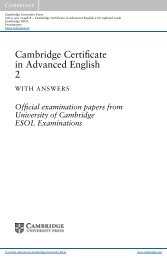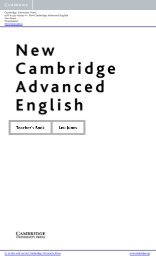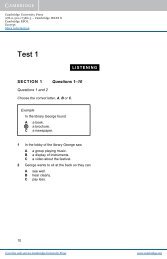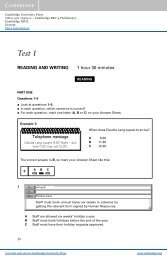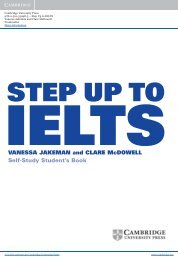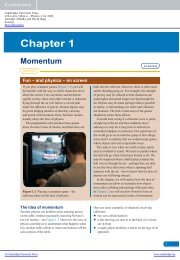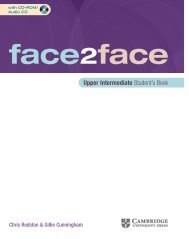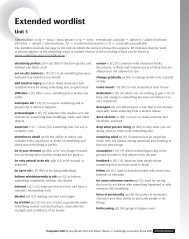Skills for Study Level 2 Teacher's Book - Cambridge University Press
Skills for Study Level 2 Teacher's Book - Cambridge University Press
Skills for Study Level 2 Teacher's Book - Cambridge University Press
You also want an ePaper? Increase the reach of your titles
YUMPU automatically turns print PDFs into web optimized ePapers that Google loves.
Part DReporting in speechThe aim of this lesson is <strong>for</strong> students to improve their speaking skills through:• describing research findings• describing and explaining data• discussing research findings.1 Describing research findings1a Student discussionSuggested answersElement of reportIntroductionMethod (or approach) used <strong>for</strong> gathering dataResults (findings)Discussion of findingsConclusionReferencesIn detail (D) or brief (B)?BBDDBN/A1b Students compare their ideas in groups.2 Describing and explaining dataNote: This section first gives some practice with integrating a visual aid into an oralpresentation, suggesting that three things are necessary <strong>for</strong> maximum clarity andeffectiveness:1 Clearly refer to the in<strong>for</strong>mation on the visual aid in your speech, to draw youraudience’s attention to what you are speaking about.2 Give a summary of the key points of the in<strong>for</strong>mation. Don’t just leave youraudience to interpret the in<strong>for</strong>mation <strong>for</strong> themselves.3 Give a commentary about the in<strong>for</strong>mation – what does it show, what does itsuggest, what implications can we understand from this piece of in<strong>for</strong>mation?2a Students in pairs review in<strong>for</strong>mation about one room-design study, and identify thekey findings. (See 2b <strong>for</strong> answers.)Unit 4 Part D ∙ Reporting in speech 124



